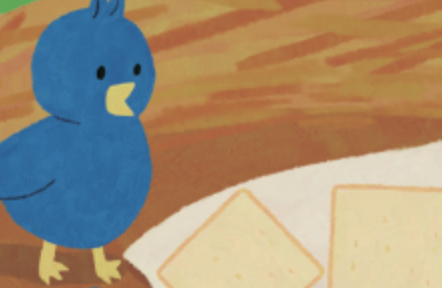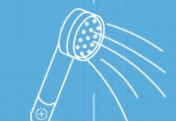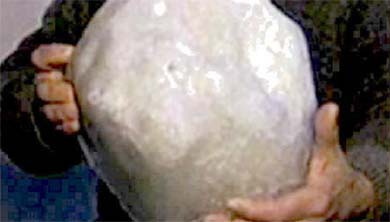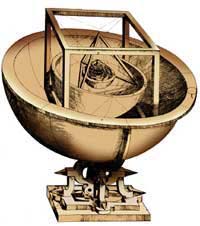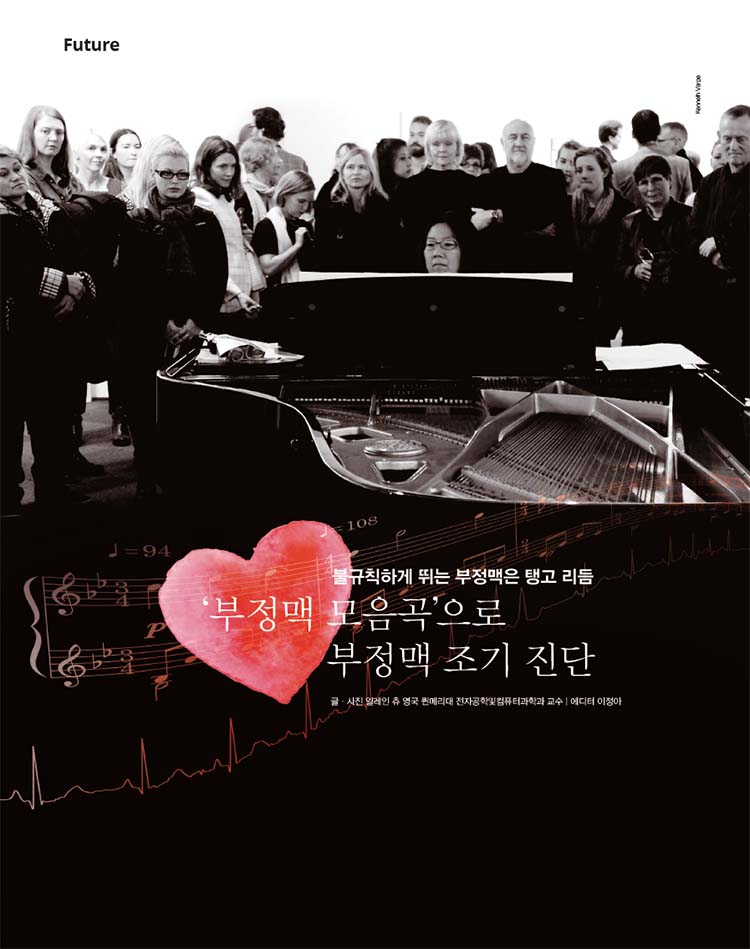
올해 9월, 영국 남부에 자리 잡은 브라이튼에서는 과학축제 ‘브리티시 사이언스페스티벌(British Science Festival)’이 열렸다. 브리티시 사이언스 페스티벌은 영국과학진흥회(BSA·British Science Association) 주관으로 1831년부터 매년 개최되는 영국 최고의 대중 과학 행사다.
올해 축제의 스포트라이트는 일레인 츄(Elaine Chew) 퀸메리대 전자공학및컴퓨터과학과 교수에게 쏟아졌다. 영국 일간 데일리메일은 “치명적인 심장 마비의 잠재적인 경고인 불규칙한 심장박동은 대부분의 사람들이 듣고 싶은 소리가 아니다. 하지만 음악을 전공한 과학자가 불규칙한 심장박동 소리를 고전음악으로 탈바꿈시켰다”고 썼다.
츄 교수는 피아니스트이자 음향물리학자다. 츄 교수팀은 런던 세인트 바르톨로뮤 병원측에서 부정맥 환자의 심장박동 데이터를 제공 받았다. 이를 심박 리듬 패턴에 따라 분류하고 각 그룹을 음악으로 변환했다. 츄 교수팀은 여기에 ‘부정맥 모음곡(Arrhythmia Suite)’이라는 이름을 붙이고 올해 브리티시 사이언스 페스티벌에서 처음 공개했다.
건강한 사람은 심장이 ‘두근 두근(ba-domp ba-domp)’ 규칙적으로 뛴다. 반면 부정맥 환자는 심박 리듬이 불규칙하다. 츄 교수는 과학동아와의 e메일 인터뷰에서 “부정맥은 리듬이 불규칙하기 때문에 음악적인 측면에서는 오히려 규칙적인 심박보다 뛰어나다”며 “마치 클래식 음악의 한 소절을 듣는 것 같다”고 밝혔다. 그는 특히 영국 근대음악 작곡가 구스타브 홀스트의 음악 스타일과 비슷하다고 평했다.
츄 교수팀이 음악적 목적으로만 부정맥 모음곡을 작곡한 건 아니다. 연구팀은 심박 리듬 음악을 활용하면 지금까지 병원에서 사용하는 심전도 그래프보다 부정맥을 진단하기가 훨씬 수월할 것으로 기대하고 있다. 츄 교수는 “환자의 불규칙한 심박 패턴을 분석해 맞춤형 진단과 치료를 할 수 있을 것”이라고 설명했다.
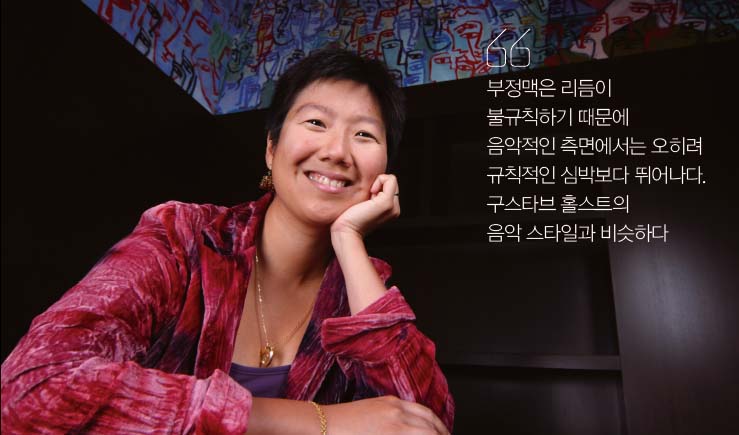
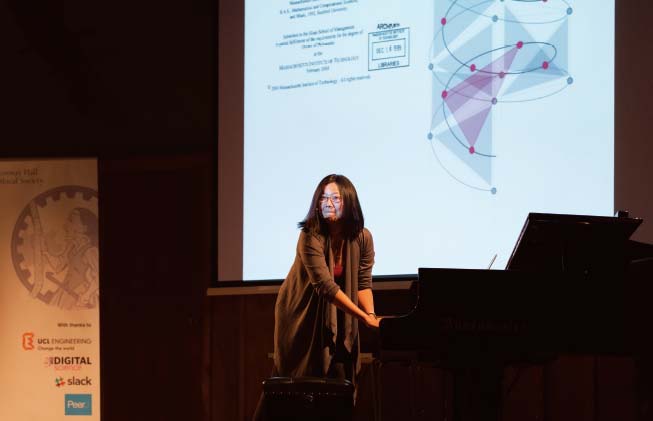

- writer Elaine Chew (professor at Queen Mary University of London)
I am a professor of Digital Media in the School of Electronic Engineering and Computer Science at Queen Mary University of London, where I am affiliated with the Centre for Digital Music. As a researcher, I specialize in mathematical representations of music, music perception and cognition, and computational music structure analysis. As a pianist, I perform frequently in solo and chamber music concerts, and collaborate with composers to create and present new work.
저는 영국 런던 퀸메리대 전자공학및컴퓨터과학과 디지털뮤직센터에서 디지털미디어를 연구하고 있는 일레인 츄 교수입니다. 저는 음악을 수학적으로 표현하고, 음악적인 인식과 인지, 그리고 컴퓨터 음악의 구조 분석을 전문적으로 연구합니다. 또한 가끔 독주회나 실내악콘서트에서 연주하는 피아니스트이기도 합니다. 그리고 작곡가들과 협업해 창작하기도 합니다.
Why did you make music using heartbeats?
This project was motivated by my own experience with arrhythmia. Living with the abnormal heart rhythms and feeling them in my body made me aware that they are very interesting and musical, and lend themselves to music description.
But it was not until I had a chat with a doctor, Jem Lane, just before a medical procedure to treat my arrhythmia that I decided to transcribe the rhythms and turn them into music so that others can experience the rhythms I know so well.
The doctor mentioned that during a cardiology Christmas party, he had designed a quiz for his colleagues where they had to guess the arrhythmia based on the tempo of electronic music. I thought we could do a lot better than simply match the tempo.
과학동아(이하 과동) : 심장박동으로 음악을 만든 이유는 무엇인가요?
일레인 츄 교수(이하 츄 교수): 이 프로젝트는 어린 시절 부정맥을 겪었던 저의 경험에서 모티브를 얻었습니다. 비정상적으로 뛰는 심장박동 리듬을 느끼고 또 그렇게 살아가면서, 저는 부정맥이 매우 흥미롭고 음악적이며, 음악으로 표현하기에 좋다는 것을 깨달았습니다.
그리고 주치의였던 젬 레인 선생님과 대화하고 나서, 저는 저의 부정맥 증상을 음악으로 만들어야겠다고 결심했습니다. 제가 아주 잘 알고 있는 리듬을 다른 사람들에게도 들려주기 위해서였지요.
레인 선생님은 심장내과 크리스마스 파티에서 전자 음악의 템포를 듣고 부정맥을 맞혀보라는 퀴즈를 냈습니다. 저는 단순히 템포를 듣고 심박을 맞히는 것보다 더 훌륭한 일을 할 수 있겠다고 생각했습니다.
How did you make music from heartbeat data?
The idea is quite simple. With the help of three student research partners(Ashwin Krishna, Daniel Soberanes, and Matthew Ybarra) during a summer research fellowship at the Radcliffe Institute for Advanced Study at Harvard, we took electrocardiographic data of arrhythmia sequences, used computers to extract the beats, and transcribed the heartbeats to music notation.
Music having the same or similar rhythmic patterns were then fitted to the transcribed rhythms, with minor adjustments. The results were collage pieces(recombinations and transformations of existing material) that mirrored the rhythms of the arrhythmia sequences.
과동 : 심장박동을 어떻게 음악으로 만들었나요?
츄 교수 : 심장박동으로 작곡하는 작업은 사실 아주 간단합니다. 미국 하버드대 래드플리프 고등연구소에서 열린 하계 연구 프로그램에서 아슈윈 크리슈나(Ashwin Krishna), 대니얼 소베라네스(Daniel Soberanes), 매튜 이바라(Matthew Ybarra), 이렇게 세 연구원의 도움을 받았습니다. 우리는 부정맥 환자의 심전도 데이터를 모으고, 컴퓨터를 이용해 이 데이터에 있는 심박을 추출한 뒤 박자에 따라 음표를 그렸습니다.
그런 다음 부정맥이 나타나는 부분의 리듬을 조금씩 바꿔 이어붙이면서, 이와 동일하거나 비슷한 리듬 패턴을 가진 음악으로 만들었습니다.
How did you make music from heartbeat data?
The idea is quite simple. With the help of three student research partners(Ashwin Krishna, Daniel Soberanes, and Matthew Ybarra) during a summer research fellowship at the Radcliffe Institute for Advanced Study at Harvard, we took electrocardiographic data of arrhythmia sequences, used computers to extract the beats, and transcribed the heartbeats to music notation.
Music having the same or similar rhythmic patterns were then fitted to the transcribed rhythms, with minor adjustments. The results were collage pieces(recombinations and transformations of existing material) that mirrored the rhythms of the arrhythmia sequences.
과동 : 규칙적인 심장박동과 불규칙한 심장박동은 어떻게 다른가요?
츄 교수 : 건강한 심장은 주기적이고 거의 규칙적으로 뜁니다. 심박이 규칙적이면 ‘동리듬’이라고 부르는데, 일정한 시간 간격으로 뜁니다. 운동을 하면 심박이 증가하고, 휴식을 취하면 감소합니다. 다만 그 변화가 크지 않고, 부드럽게 바뀌지요.
진짜 흥미로운 리듬은 부정맥에서 나타납니다. 탱고나 (영국 근대음악 작곡가인) 구스타브 홀스트의 ‘행성(The Planets)’ 시리즈 중 ‘화성(Mars)’이 시작하는 부분처럼 ‘3+3+2 리듬 패턴’이 나타나거든요. 또한 부정맥 리듬은 가끔 갑자기 시작하거나 갑자기 멈춥니다. 이 리듬이 음악이 될 수 있는 이유지요.

What is the difference between music of regular and irregular heartbeats(arrhythmia)?
Regular heartbeats are, well, periodic and mostly regular. When a heart beats regularly, in what is called ‘sinus rhythm’, the beats are more or less evenly spaced in time. The rate might increase with exercise and decrease with rest, but changes are comparatively small and progress relatively smooth.
The really interesting rhythms, musically speaking, are to be found in arrhythmia. In the transcriptions, we have seen patterns such as the 3+3+2 rhythm found in tango or the rhythmic motif at the opening of ‘Mars’ in Gustav Holst’s ‘The Planets’. Also, the rhythms of arrhythmia often start and stop suddenly, as rhythms can and do in music.
과동 : 규칙적인 심장박동과 불규칙한 심장박동은 어떻게 다른가요?
츄 교수 : 건강한 심장은 주기적이고 거의 규칙적으로 뜁니다. 심박이 규칙적이면 ‘동리듬’이라고 부르는데, 일정한 시간 간격으로 뜁니다. 운동을 하면 심박이 증가하고, 휴식을 취하면 감소합니다. 다만 그 변화가 크지 않고, 부드럽게 바뀌지요.
진짜 흥미로운 리듬은 부정맥에서 나타납니다. 탱고나 (영국 근대음악 작곡가인) 구스타브 홀스트의 ‘행성(The Planets)’ 시리즈 중 ‘화성(Mars)’이 시작하는 부분처럼 ‘3+3+2 리듬 패턴’이 나타나거든요. 또한 부정맥 리듬은 가끔 갑자기 시작하거나 갑자기 멈춥니다. 이 리듬이 음악이 될 수 있는 이유지요.
Do you plan to use your heartbeat music in medicine?
The music conveys to listeners the sensations of different arrhythmias. We plan to use the music representations(This is distinct from the music itself) to understand patterns in arrhythmia subtypes. For this, we are collaborating with professor Pier Lambiase, a cardiologist specializing in rhythm disorders who also helped provide the data for these initial studies, and his research team. This work could potentially help doctors provide more personalized and target treatments for arrhythmias so as to improve patient outcomes.
과동 : 심장박동으로 작곡한 음악을 의학적으로도 사용할 수 있을까요?
츄 교수 : (부정맥 데이터로 만든) 음악은 듣는 이에게 부정맥에 대한 다양한 느낌을 줍니다. 우리는 부정맥에서 나타나는 다양한 형태를 이 ‘음악적으로 표현한 것(완전한 음악은 아닙니다)’을 이용해 설명할 계획입니다. 그래서 우리는 부정맥 전문 심장내과의인 피어 램바이어스 교수와 협업할 계획입니다. 심박 데이터를 제공하는 등 초기 연구에 도움을 준 분입니다. 우리가 연구한 결과를 활용하면 부정맥 환자들을 ‘개인별 맞춤 치료’를 하거나 부정맥 증상을 호전시키는 데 도움이 될 것이라고 기대합니다.
After heartbeats, would you consider making music from other source? For example, planetary orbits?
I would not rule out making music from other sources, although I think it will be a while before I exhaust the ideas I have in mind (of which creating music is only one) for the electrocardiographic data. Others have created music from sources such as electroencephalogram data, oceanographic data, and data from cosmological phenomena. What is beautiful about the heartbeat music is that it is a tangible realization of the age-old idea of ‘Musica Humana’, which dates back to the middle ages and can be traced back to the ancient Greeks.
과동 : 심장박동 외에 무엇을 음악으로 표현할 수 있을까요? 행성 궤도는 어떤가요?
츄 교수 : 지금은 심전도 데이터를 음악으로 만드는 데 몰두하고 있지만, 다른 소스로 작곡하는 것도 염두에 두고 있답니다. 어떤 사람들은 뇌전도나 바다, 우주 현상에서 데이터를 얻어 음악을 만듭니다. 심박으로 작곡한 음악이 아름다운 점은 ‘무지카 후마나(Musica Humana)’라고 부르는, 고대 그리스 시대에 상상했던 아이디어를 실현했다는 사실입니다.
What advice do you have for students who are aspiring musician-scientist?
Get the best education you can in science and mathematics, and in music. There are now many ways to combine both music and science in a productive career. It is important not only to have the technical chops to carry out the work, but also to have the musical sensibilities to know the right questions to ask.
과동 : 교수님처럼 ‘음악 하는 과학자’가 되려면 어떻게 해야 할까요?
츄 교수 : 먼저 과학과 수학, 그리고 음악을 모두 열심히 공부하세요. 음악과 과학을 융합하는 방법은 다양합니다. 테크닉도 중요하지만, 무엇을 표현할지 구체적으로 떠올릴 수 있도록 음악적인 감각을 갖는 일이 중요합니다.





